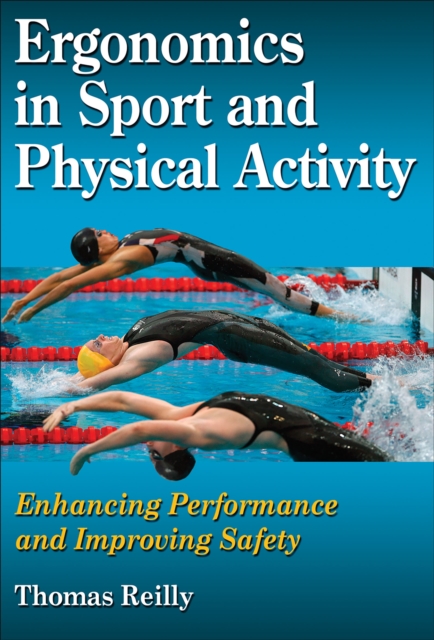
Ergonomics in Sport and Physical Activity PDF
by Thomas Reilly
Description
Ergonomics in Sport and Physical Activity: Enhancing Performance and Improving Safety is also available as an e-book. The e-book is available at a reduced price and allows readers to highlight and take notes throughout the text. When purchased through the Human Kinetics site, access to the e-book is immediately granted when the order is received.Ergonomics in Sport and Physical Activity: Enhancing Performance and Improving Safety is the first text to provide an in-depth discussion of how the principles of ergonomics can be applied in the context of sport and other physical activities to reduce injury and improve performance. The textblends concepts from biomechanics, physiology, and psychology as it shows how ergonomics is applied to physical activity.
This comprehensive text outlines methods for assessing risk in and procedures for dealing with stress, eliminating hazards, and evaluating challenges posed in specific work or sport environments. It discusses issues such as the design of effective equipment, clothing, and playing surfaces; methods of assessing risk in situations; and staying within appropriate training levels to reduce fatigue and avoid overtraining. The text not only examines sport ergonomics but also discusses ergonomic considerations for physically active special populations.
Ergonomics in Sport and Physical Activity explains what ergonomics is, how ergonomists solve practical problems in the workplace, and how principles of ergonomics are applied in the context of sport and other physical activities when solving practical problems related to human characteristics and capabilities. The text shows readers how to improve performance, achieve optimal efficiency, enhance comfort, and reduce injuries by exploring topics such as these:
Essential concepts, terms, and principles of ergonomics and how these relate to physical activity Physical properties of the body and the factors limiting performance Interactions between the individual, the task, and the environment Injury risk factors in relation to body mechanics in various physical activities Injury prevention and individual protection in the review of sports equipment and sports environments Comfort, efficiency, safety, and details of systems criteria in equipment designThis research-based text uses numerous practical examples, figures, charts, and graphs to bring the material to life. In addition, descriptions of technological advances show where we have been and how technology has advanced the field. Through the books discussion of the various stressors and adaptive mechanisms, readers will learn how to cope with various environmental conditions. They will also learn how various training modes can be used to alter sport-specific capabilities and enhance performance.
Presenting a wide range of approaches, theoretical models, and analytical techniques, Ergonomics in Sport and Physical Activity: Enhancing Performance and Improving Safety illustrates the potential for ergonomics to be extended across recreation, competitive sport, and physically active work environments. Bridging the gap between ergonomics and exercise science, this unique text will assist both health care and exercise professionals in developing an improved awareness of how human capabilities are best matched to physical activities.
Information
-
Download - Immediately Available
- Format:PDF
- Publisher:Human Kinetics
- Publication Date:16/07/2018
- Category:
- ISBN:9781492576822
Other Formats
- EPUB from £45.90
Information
-
Download - Immediately Available
- Format:PDF
- Publisher:Human Kinetics
- Publication Date:16/07/2018
- Category:
- ISBN:9781492576822






